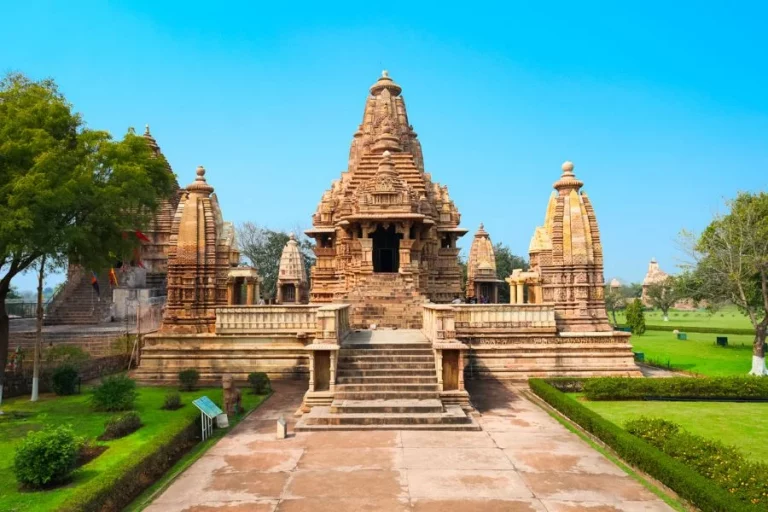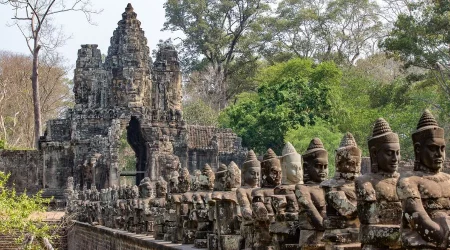India is a country steeped in a rich culture and history, with Hindu temples playing an integral role in the celebration of some of India’s most treasured customs and traditions. Whether you’re looking to explore the stunning architecture, vibrant colors, or intriguing folklore, visiting India’s Hindu temples is sure to be an unforgettable experience. From the grandeur of the Golden Temple in Amritsar to the intricate carvings of the Sun Temple in Konark, each temple has its own unique story to tell. Hindu temples are not only places of worship, but also places where people come to celebrate the festivals, weddings and other rituals of the Hindu faith. Whether you explore the many temples of India for spiritual renewal or to learn about the culture and history of the country, you’ll find something for everyone.
Architectural features of Hindu temples
Temples are the most important architectural features of the Hindu religion. These are found in every village and town of India, representing a wide variety of architectural styles. There is no general rule for the classification of temples. One can visit temples of every architectural style at any place in India, except the north-western part. No one style predominates. In the South, there are many Dravidian temples, simple in design and executed in laterite stone. In the North, North-West and Central India, one finds temples in the Indo-Aryan style, most of them being built of sandstone or limestone. In the North-East, one comes across the temples of Tibetian or Bhutanese style. In the western regions of India, in Gujarat, Rajasthan, and Punjab, one comes across the temples of the Gujrati, Rajasthani, and the Punjab styles. In the upper parts of North-East, one finds the temples of the Assamese and the Tibetan styles. In the North-Western part of India, in Haryana, Punjab, and Himachal Pradesh, one finds temples in the Indo-Gothic style. The only style that does not find a place in the architectural vocabulary of Hindu temples is the Dravidian style. Most of the other styles are built upon the Dravidian style.
Historic Hindu temples in India
Hindu temples are an integral part of Indian history and culture. They are places for worship, meditation, and spiritual growth, but they are also significant historic and architectural landmarks. Many of these temples are hundreds of years old and were constructed by kings and queens who also established their authority by building these important places of worship. Today, there are over 50,000 Hindu temples in India, and each one is unique. Here are some of the most significant Hindu temples in India:
Padmanabhaswamy Temple: This temple is the richest temple in the world, and it’s located in the state of Kerala. It is believed that there is a huge amount of treasure hidden inside the temple, but it can’t be accessed because of the intricate security system.
Hazara Rama Temple: This temple is located in the state of Gujarat, and it’s dedicated to Rama, who is the protagonist of the famous Hindu epic Ramayana.
Somnath Temple: This ancient temple is the first among the twelve Jyotirlingas, which are the most sacred temples in India.
Trikuteshwara Temple: This temple is dedicated to Shiva and is located in the state of Karnataka. It is one of the five great Shaiva temples in South India.
Kashi Vishwanath Temple: This is the most famous temple in Varanasi, and it is dedicated to Lord Shiva.
Meenakshi Temple: This beautiful temple is dedicated to the goddess Parvati and her husband, the god Shiva. It is one of the most significant temples in Tamil Nadu.
The Golden Temple in Amritsar: This is one of the most important pilgrimage sites for the Sikh and Hindu religions. It is known for its beauty and vibrant architecture.
Hindu traditions and rituals at temples
- Puja: Puja is a ritual of paying respects to the gods by offering them flowers, fruits, incense, and other things. There are different types of puja, and one is usually done for the deity of one’s interest.
- Homa: Homa is a ritual performed to appease and please the gods by burning flowers and other aromatic substances in a fire altar.
- Naivedya: This ritual involves the offering of food and drinks to the gods as a mark of devotion and respect.
- Prasad: This is food and drink that has been offered to the gods. It is believed that once the food or drink is offered to the gods, the spiritual power present in them is then transferred to the devotees who consume them.
- Havan: This is a ritual in which offerings of ghee, sandalwood, herbs, incense, and fragrant flowers are made to the fire. Traditionally, a havan is done with specific materials for a specific purpose.
- Shaligram: This is a ritual done at the temple or at home to bring good fortune and prosperity. At the temple, devotees take a small stone from the Shaligram river, which is believed to bring good fortune when kept in the house.
Festivals celebrated at Indian temples
- Navaratri: During this nine-day festival, Hindus celebrate the victory of good over evil. It is celebrated from the first day of Ashwin month to the tenth day, which is Vijayadashami, the day when the goddess Durga killed the evil Mahishasura.
- Ram Navami: This festival is celebrated as the birthday of Lord Rama. It is celebrated on the ninth day of the month of Chaitra, when Rama was born.
- Maha Shivaratri: This is the biggest festival dedicated to Lord Shiva, who is one of the most prominent gods of Hinduism. Maha Shivaratri is celebrated on the 13th night and 14th day of the month of Phalguna.
- Pongal: Pongal is a four-day harvest festival, which is celebrated to mark the end of harvest season and the beginning of the new harvesting season.
- Basant: This festival is also known as Bh spring festival is one of the most significant and well-known festivals of Northern India. It is celebrated with dancing, singing, and feasting.
- Holi: This festival celebrates the coming of spring. The festival is celebrated in the northern parts of India, and people celebrate it by spraying colored water and splashing colored powder on each other.
- Teej: This festival is dedicated to Parvati, the wife of Shiva. It is celebrated on the third day after the new moon of the month of Sawan.
- Durga Puja: Durga Puja is the most significant festival in Bengal and Orissa. It is celebrated for ten days, from the sixth to the 16th of Ashwin.
- Diwali: Diwali is the festival of lights, and it is celebrated by Hindus and Sikhs all over India. It is celebrated on the new moon day of the month of Kartik.
- Gujarati New Year: This festival is celebrated in the state of Gujarat as the new year. It is celebrated on the first day of the new month of Chaitra.
- Christmas: This festival is celebrated by Christians all over India.
Significance of Hindu temples
Hindu temples are places where one can find peace, solace, and a connection with a higher power. They are open to people of all religions and are a great place to visit when looking for a quiet place to gather one’s thoughts. While visiting a temple, people are expected to dress appropriately, follow certain rules, and respect the place they are in. They are also expected to clean up after themselves and leave the temple as they found it in order to preserve the culture and history of the place. Hindu temples are places where all people are welcome regardless of their religion or culture, and many are open 24 hours a day for people to come and pray or enjoy their serenity whenever they please.

